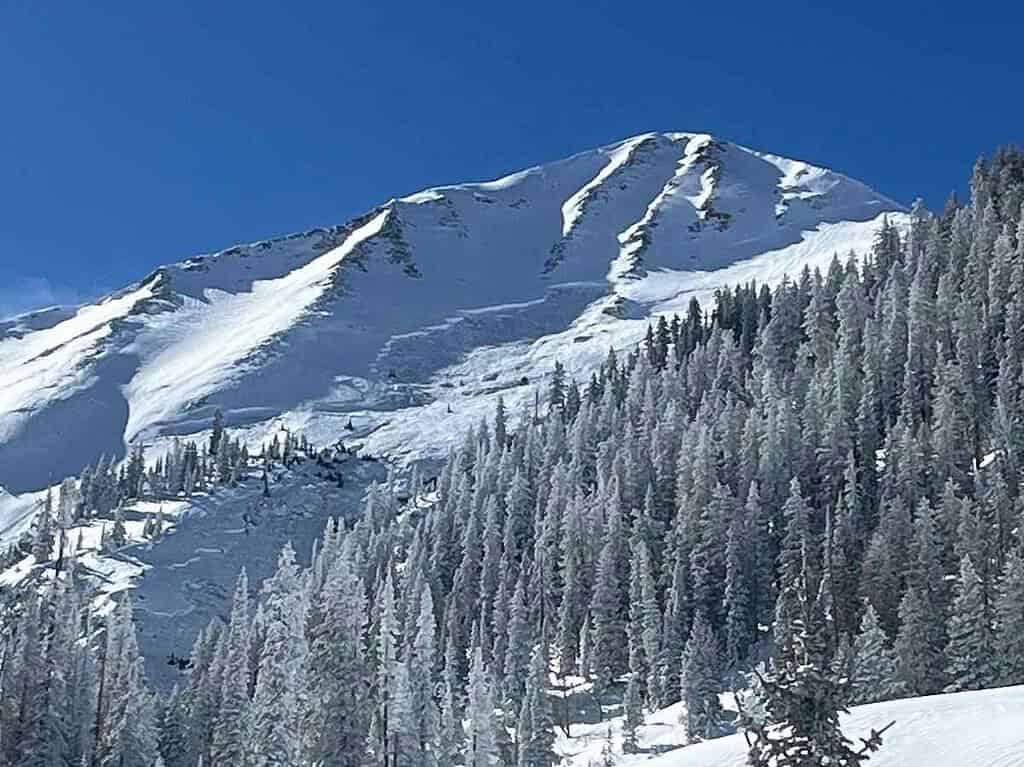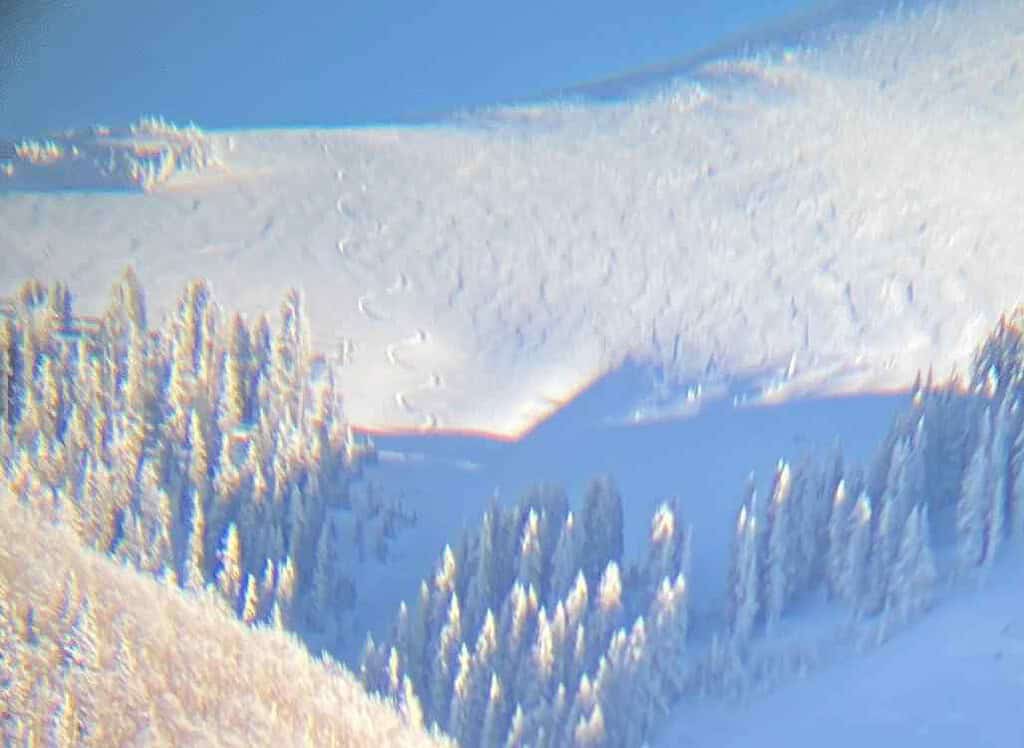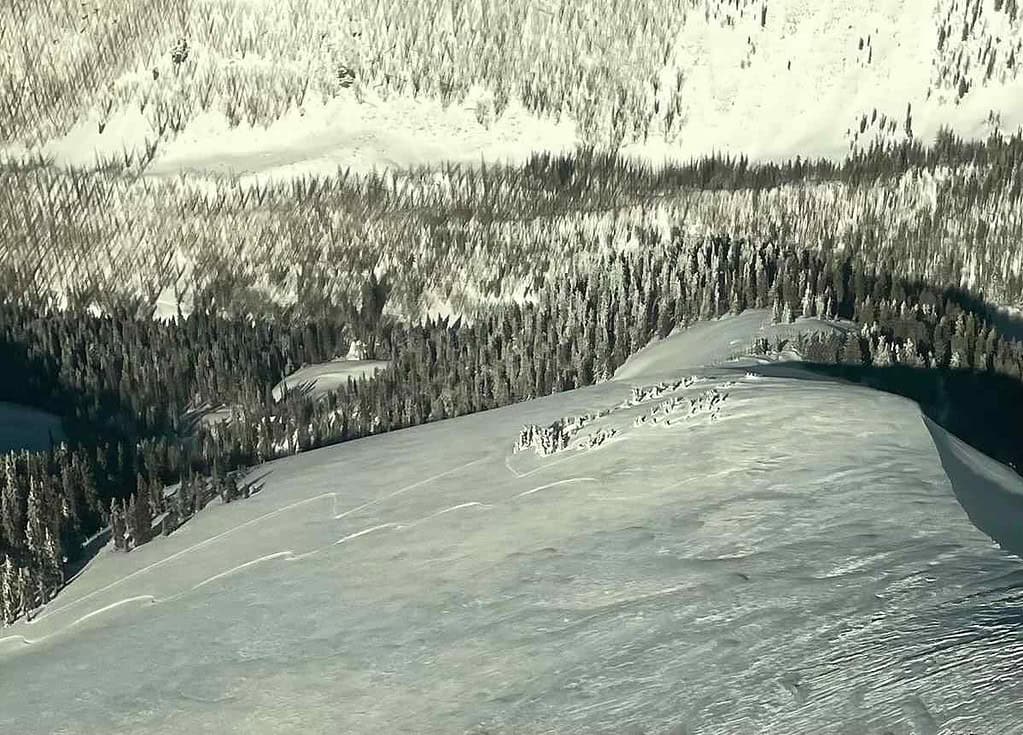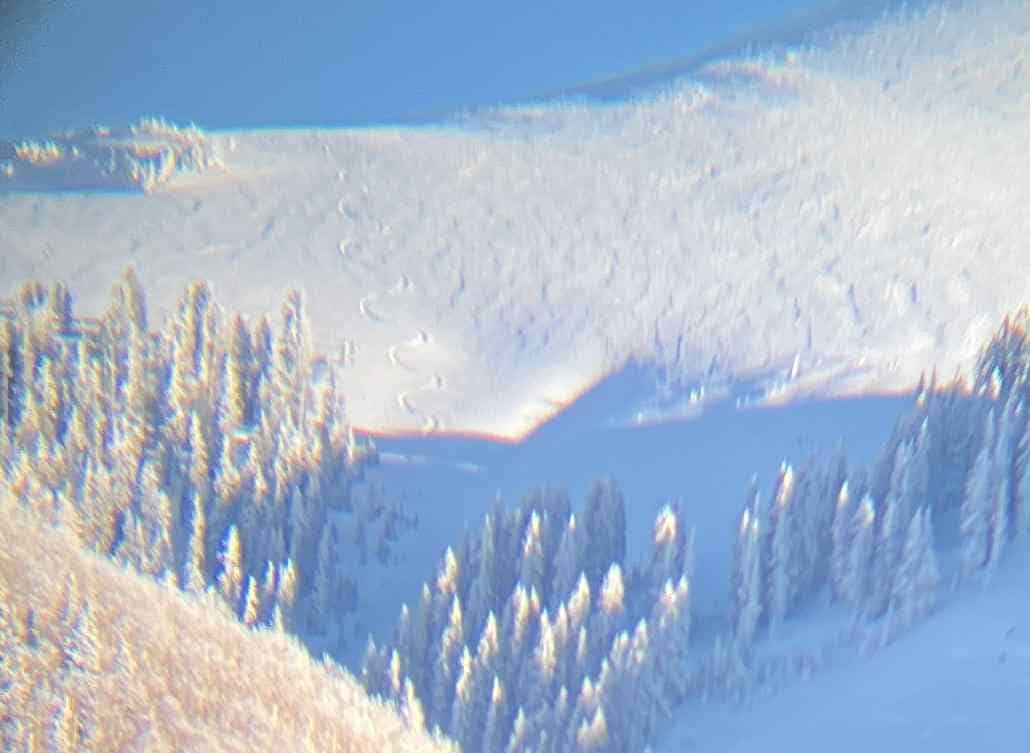Some information may be outdated.
Evidence of a huge human-triggered avalanche in the La Sals is a stark reminder of mountain dangers, expert says
Evidence shows one lone skier in the La Sal Mountains may have gotten the scare of a lifetime, as staff from the Utah Avalanche Center discovered a 1500-foot wide avalanche that appears to have been human-triggered.


“These words that we say over and over in the forecast every day,” Eric Trenbeath, Utah Avalanche Center forecaster for the Manti-La Sal National Forest, said. “‘There’s a persistent weak layer, human triggered avalanches are likely…’ These dangers are real. This avalanche would have been unsurvivable.”
After a dry November and December, a storm placed a thick layer of new snow over old on the slopes of the La Sals—perfect conditions for avalanches.
“We’re always looking for strong snow over weak snow,” Trenbeath said. The steep slopes of the mountains mean that such layers can be extremely delicate and prone to sliding when triggered by weather, heavy snowfall…or human activity.
After the snowfall, Trenbeath and other avalanche forecasters went into the mountains to evaluate conditions. The new snow had triggered many natural avalanches, but Trenbeath caught sight of one massive avalanche site above Gold Basin.

“I look up on the northeast face of Mount [Tukuhnikivatz] and I see a giant crown, the fracture line where the avalanche broke loose. You can see that in the photos, it must be six feet high,” he said.
Trenbeath’s mind raced with possibilities, contemplating the potential triggers that could have unleashed such devastation.
“We pull out our beacons to see if we get a signal from somebody buried,” he said. “We don’t get a signal, but I still don’t feel really good about it.”
Trenbeath called in the Winter Rescue Team, who surveyed the top of the slide in a helicopter.
“They see the tracks up on the ridge,” he said. The ski tracks are close to where the avalanche began, but descend down the other side of the ridge.
“This person safely left the area,” said Trenbeath. “It’s likely they were on the ridge and triggered it.”
While Trenbeath is grateful that this huge avalanche took place without tragedy, it’s a sobering reminder of the power of the mountains.
“The Moab community pays attention to the forecast. I think they know the history of this mountain range,” Trenbeath begins, alluding to past fatalities and accidents, including a tragic avalanche in 1992 that claimed four lives and a death in Dark Canyon four years ago.
“Still, our warnings can start sounding like a broken record,” said Trenbeath. “We keep telling people to stay off of steep, northerly-facing terrain because human-triggered avalanches are likely. But people may feel like ‘What does that mean?’”
“This is what we mean: It’s real. These words that we say over and over in the forecast every day are serious,” he said.
As Moab braces for another storm and the avalanche warning extends across southern Utah, Trenbeath’s words serve as a poignant reminder of the fragility of life amidst the awe-inspiring grandeur of the mountains.
“This weekend, we’ve got another storm on the doorstep,” he said. “An avalanche warning has been issued for the mountains of southern Utah, all the way from Brian Head through southwestern Utah to the Abajo Mountains. We’re anticipating increasing danger and dangerous conditions lasting through at least through the weekend.”
Read updated avalanche reports and send in your own observations to the Utah Avalanche Center at utahavalanchecenter.org.
Appreciate the coverage? Help keep local news alive.
Chip in to support the Moab Sun News.





